

Table of contents
- Causes of white spots
- powdery mildew
- Wrong mildew
- white rust
- nutrient deficiency
- Lime stains
- burns
- pests
- frequently asked Questions
Whether in the home or in the garden, white spots on the leaves of your favorite plants are always a cause for concern. However, the causes can often be eliminated quickly. This guide summarizes the most common triggers and gives tips for quick help.
Causes of white spots
Various triggers can be responsible for the appearance of white spots on the leaves. This includes:
- Diseases
- care mistakes
- pests
For a successful elimination, the cause must first be investigated. Otherwise no targeted measures are possible.
powdery mildew
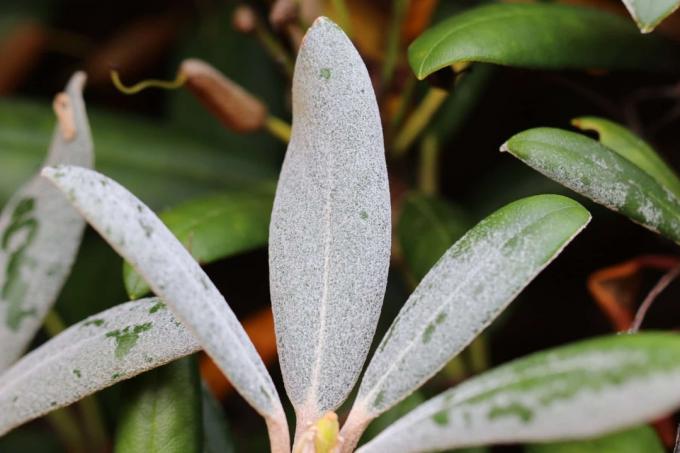
powdery mildew is a fungal disease that mainly affects outdoor plants, but also affects indoor plants. The faster it is recognized and treated, the higher the chances of the plant being preserved.
Powdery mildew can be recognized by:
- white spots on the upper side of the leaf
- floury consistency
- It is easy to wipe off the coverings
- Leaves curl up over time
- Coatings are possible on all parts of the plant above ground
A notice:
As easily as the white spots can be wiped off the leaves, the disease is unfortunately not yet eliminated.
Treat powdery mildew
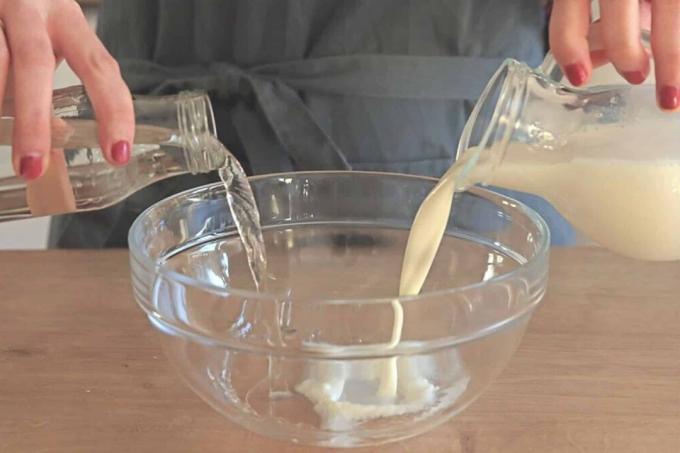
There are practical means on the market to combat powdery mildew. A simple household remedy is also sufficient for this:
- Mix raw milk or fresh milk with water in a ratio of 1:8
- Pour into a spray bottle and spray affected plants with it
- soak for about 20 to 30 minutes
- Rinse off residues with clear water
- Repeat the process over several days
Wrong mildew
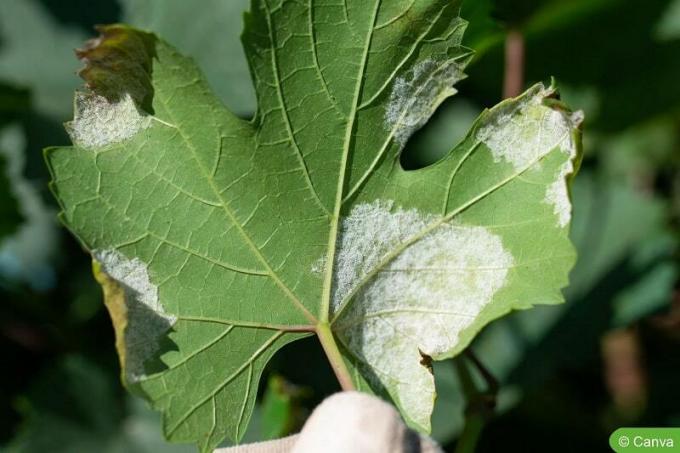
In contrast to powdery mildew, downy mildew occurs primarily in damp and cold weather. It also differs in appearance.
Important points for the assignment are:
- white dots and coatings on the undersides of the leaves
- Upper sides of leaves often discolored brown
- Points run into each other and become darker over time
Combat downy mildew
Controlling downy mildew requires two steps and is very simple. First, the affected parts of the plant must be removed. A commercially available fungicide or a home remedy can then be used.
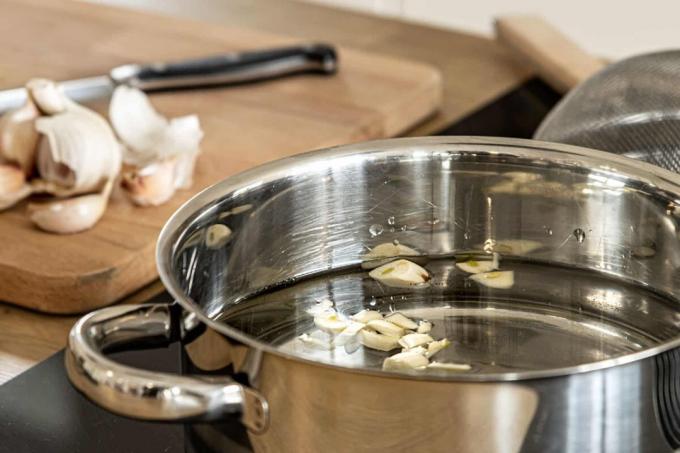
Suitable for this are a Garlic broth or field horsetail. A simple spray is enough to completely kill the spores after repeated applications.
Tip:
As a precaution, place the plants at a sufficient distance from each other and avoid watering the leaves and flowers.
white rust
This fungal disease (Albugo candida) is characterized by tiny little white dots or pustules. They get bigger over time and eventually burst open, spreading the spores over a large area.

When choosing fungicides, it is important to consider agents with the active ingredient metalaxyl to use. Other substances can prevent an infestation, but are no longer effective once the disease has broken out.
Tip:
If the infestation is already very advanced, the complete, well-packaged disposal of the plant with the household waste is often the more sensible option.
nutrient deficiency
If the soil is used up and lacks the necessary nutrients or if these can no longer be absorbed due to lime residues on the roots, the leafy green can generally fade. In addition, some may show lighter or even white spots. These are not always sharply demarcated, but sometimes blurred.
Repotting or an adapted fertilization quickly remedy this.
Lime stains
When the plant is sprayed with water or that irrigation water If it gets on the leaves, residues of lime can form here. They can usually be removed very easily by wiping with a damp cloth.
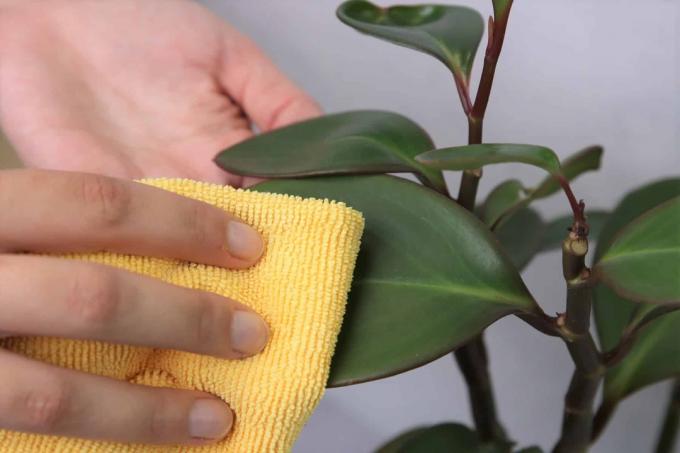
This is also important, because in the long run and with increasing deposits, the lime restricts photosynthesis. This weakens the plant and can make it more susceptible to diseases and pests.
burns
Too bright a location or an abrupt move into direct sunlight can cause spots. These are not always immediately yellow or brown. Punctual lightening and almost white spots are also possible.
Here the demands of the plant on the location should be checked and the position or the type of change adjusted if necessary.
pests
Infestation with pests can also turn out to be the cause of white spots on the leaves. The reasons for this vary depending on the species. Discolouration is possible due to:
- excretions
- toppings
- webs
- white or light coloring due to suction marks
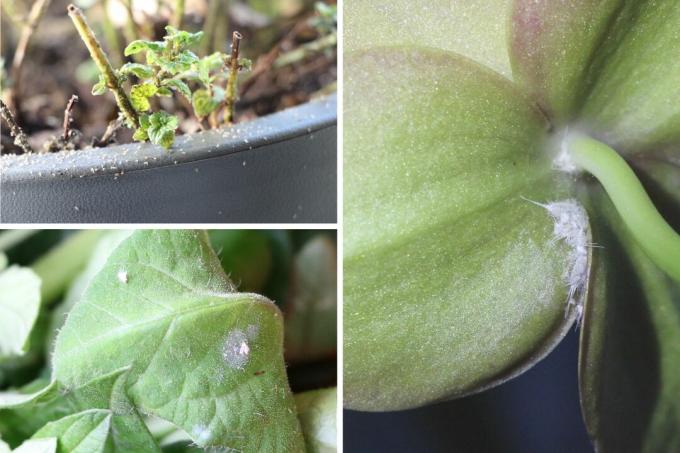
In some cases, the pests themselves can attract attention. These parasites can be:
- leafhoppers
- spider mites
- thrips
- white flies
- Mealybug
In any case, the plant can be treated with appropriate commercially available pesticides. Of course, we advise you to use more environmentally friendly home remedies beforehand. Yellow boards are also a good way of identifying the respective type of pest.
Tip:
If it is difficult to distinguish between pests and diseases, comparing pictures of the different infestation types can be helpful.
frequently asked Questions
Yes, with optimal care and conditions at the site, some causes of white spots can be ruled out from the outset. In any case, this is not possible.
Yes, the formation of white dots is not only possible when wetting the leaves. If hard water or too much water is used when watering, the liquid will evaporate through the leaves. However, the mineral salts contained in the water do not evaporate, but are deposited and become visible when the amount is sufficient.
No, it has to be fresh milk. Only it contains the microorganisms that help effectively against the triggering fungus. If the household remedy made from water and milk is not rinsed off the leaves, residues of the milk can also lead to white spots.
 Mirko
Mirko
Learn more about plant diseases

Cherry laurel has yellow eaten leaves: what to do?
Despite the robust nature of Prunus laurocerasus, it is occasionally attacked by pests and fungi. An infestation can be recognized by feeding damage and the discoloration of the leaves to yellow. You can find out how to combat and prevent the accumulation here.

Fighting grubs | Protect raised bed & lawn
Larvae of various species of beetles, grubs, can do a lot of damage in the garden. They live in the ground for several years and prefer to feed on roots. We present effective methods to combat the voracious pest or to effectively prevent an infestation.
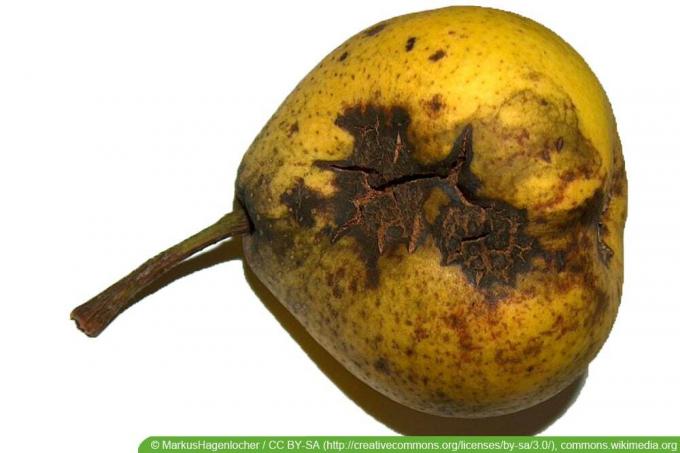
Recognizing pear scab & biological control
Pear scab (Venturia pyrina) is a disease of pears caused by a fungus. It leads to spots on the young fruits, which are then shed or stunted. Read here how to fight or avoid the disease.

Worms in cherries - 8 tips against maggots in cherries?
Worms in sweet cherries can spoil your appetite. It is a major nuisance when the entire cherry crop is affected. With these tricks you can contain the pest infestation and ensure that the insects do not multiply any further.
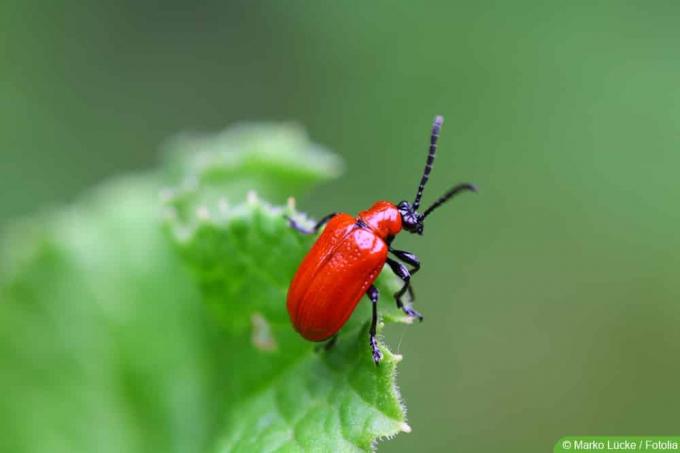
Fighting lily beetle - 11 effective home remedies
Lilies in the garden are beautiful to look at. There are the greatest types and varieties, all of which somehow have something special. Lily lovers can draw from the abundance of offers and look forward to the floral splendor. Lilies are actually quite hardy. There are few diseases and pests that can cause damage. However, the lily chicken can spoil the splendor.

Combating fungal infestation on trees: how to remove tree fungi
A tree fungus does not appear threatening, sometimes it is even interesting to look at. But that is deceptive. What we see is only the fruiting body, the mycelium is deep in the wood and destroys it slowly but purposefully. Eventually it kills the strongest tree.

